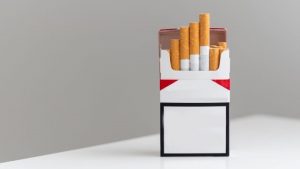 Weird Stuff
Weird Stuff  Weird Stuff
Weird Stuff  History
History 10 Legends Whose Last Moments Undid Their Glory
 Health
Health 10 Futuristic Ideas to Treat Common Medical Problems
 Weird Stuff
Weird Stuff Ten Surreal Attempts to Reverse Baldness
 Facts
Facts 10 U.S. Government Contingency Plans for the Unthinkable
 History
History 10 Weird Distractions from the Great Depression
 Movies and TV
Movies and TV 10 Fictional Kings Who Go from Good to Bad
 Food
Food The Fantastic Chemistry Behind Why 10 Popular Foods Taste So Good
 Technology
Technology 10 Futuristic Fungal Technologies
 History
History 10 Not-so-Spooky Events That Also Happened on October 31
 Weird Stuff
Weird Stuff 10 Things So Rare They’ve Only Been Found Once
 History
History 10 Legends Whose Last Moments Undid Their Glory
 Health
Health 10 Futuristic Ideas to Treat Common Medical Problems
Who's Behind Listverse?

Jamie Frater
Head Editor
Jamie founded Listverse due to an insatiable desire to share fascinating, obscure, and bizarre facts. He has been a guest speaker on numerous national radio and television stations and is a five time published author.
More About Us Weird Stuff
Weird Stuff Ten Surreal Attempts to Reverse Baldness
 Facts
Facts 10 U.S. Government Contingency Plans for the Unthinkable
 History
History 10 Weird Distractions from the Great Depression
 Movies and TV
Movies and TV 10 Fictional Kings Who Go from Good to Bad
 Food
Food The Fantastic Chemistry Behind Why 10 Popular Foods Taste So Good
 Technology
Technology 10 Futuristic Fungal Technologies
 History
History 10 Not-so-Spooky Events That Also Happened on October 31
10 Surprising Radioactive Products That People Actually Used
Many times each year, some companies are forced to recall products due to some critical flaw in their design or a problem they did not foresee. For example, a drug might have an unexpected side effect, some food could have been contaminated, or a children’s toy found to contain small or sharp pieces. These days, the word can spread about such problems quickly, leading to a swift resolution in many cases.
Most people can understand these accidental and unforeseen problems when they happen in real time. But in retrospect, it is difficult not to wonder what those companies were thinking. Nowhere is this more evident than in the early and middle 20th century, when there was a trend of putting radioactive elements in all kinds of products. What follows are some of the most puzzling and strange examples of everyday products that used to contain radioactive chemicals.
Related: Top 10 Fascinating Stories Involving Nuclear Explosions
10 Energy Drinks
While many countries today rely on nuclear power to produce energy, the association between radioactive chemicals and energy has been drawn since the early 20th century. But rather than powering homes and cities, people first tried to use them to power themselves. Those who wanted to put a bit of extra pep in their step in 1920s America could buy a bottle of RadiThor. Essentially, this was radium dissolved in water and marketed as a sort of medicinal energy drink. It claimed to cure several problems, one of which was impotence.
The supposed evidence for this came from a study on the romantic lives of water newts. Unbelievably, people were sucked in, and RadiThor sold very well despite the effects of radium already being known at the time. Luckily, RadiThor was expensive, so its sales mainly came from a small number of wealthy people, and there was no big public health crisis. However, it was shut down by the government in 1932.[1]
9 Chapatis
The general public in the 1920s may not have been widely aware of the effects of radiation. However, the Second World War showed much of the world its dangers. This means ignorance is no excuse in a shocking case from Coventry, UK, during the 1960s. There was concern at the time about the large number of South Asian women in the country who were anemic, and their diet was thought to be responsible. In 1969, around 21 women from South Asian backgrounds participated in a study to test this.
The women were sent chapatis to eat, which contained a type of radiation-emitting iron. Researchers could measure how much iron the women absorbed by monitoring their radiation levels. The scientists concluded that the flour in chapatis was insoluble, so Asian women should take extra iron. That was the last people heard about it until 1995 when a documentary questioned whether the women were able to give their consent. An inquiry in 1998 found that the study did not meet modern ethical standards, and in 2023, politicians renewed calls for more to be done to locate the women and investigate the long-term effects.[2]
8 Toothpaste
People today often describe warm, friendly smiles as “radiant,” but this took on a different meaning in early 20th-century Germany. Around the start of the century, a giant chemical company called Auergesellschaft had a main business making lanterns. To make their lanterns brighter, they made them with a radioactive metal called thorium. Some thorium was left over after each batch of lanterns had been made, and rather than dispose of it, someone in the company had the bright idea of using it in toothpaste.
It was first given to German soldiers before World War I, but it was not until after the Second World War that the company planned to mass market its Doramad thorium oxide toothpaste. Sensing that the war was ending, which would also end their sales of war items such as gas masks, they were looking to enter the cosmetics business after seeing how well it had been growing in the U.S. They knew that its toothpaste was radioactive, but they actually used this to help sell it. They claimed it would help kill germs and increase circulation in the gums.[3]
7 Suppositories
The mouth is not the only orifice for which radioactive products were designed. For those who wanted the supposed benefits of radiation but did not enjoy the taste of the products on the market, the Home Products Company out of Denver, Colorado, had a solution. In the 1920s, they began selling a 15-day course of Vita Radium Suppositories. The packaging promised that the “perfectly harmless” products were guaranteed to contain real radium, which they claimed would help men get back their “manly vigor” and “bubble over with joyous vitality.”
It was mostly marketed as a cure for impotence, although there was little that the company did not claim that it could do for men. This was because they believed the radium was absorbed into the blood and carried to every organ. Once there, it would provide a much-needed dose of energy to revitalize them. This turned out to be nonsense, and some skeptical doctors expressed their disbelief at the time.[4]
6 Radioendocrinator
Some inventors understood that radiation could enter the body from the outside, with no need to be ingested or otherwise inserted into the body at all to have an effect. They were right, but sadly unaware or negligent of the potential harm. One example of this was the Radiendocrinator, a credit card-sized device that contained radium. According to one advertisement, men were supposed to wear it at night by inserting it into an adapter that could then be worn like a jockstrap.
Other promotional materials showed both men and women with the device strapped to various places on their bodies, such as their head, neck, and back. For a 1920s product, it was extremely expensive. When it first went to market, the price was $1,000. It later sold for as little as $150, still a hefty price tag for the time. The company was closed in 1930.[5]
5 Face Creams and Powders
Like “radiant” smiles, the go-to word to describe healthy and beautiful skin is usually “glowing.” The process of improving one’s looks is even called a “glow up,” but thankfully, this is no longer taken as literally as it was in France in the first half of the 20th century. The most famous brand from that time that made use of the association between glowing, beauty, and health was Tho-Radia. They sold face creams and powders with radium in them, and the formula was attributed to a man named Alfred Curie, who also sat on the board.
His name lent credibility to the company, but he was not actually related to Marie and Pierre Curie at all, and they even thought about suing the company because of this. It was claimed that Tho-Radia would activate circulation and make wrinkles disappear, among other things. In 1937, the French government clamped down on products containing thorium and radium. In response, Alfred Curie left Tho-Radia, and the ingredients were no longer added to their items. The brand continued to exist until the early 1960s.[6]
4 Cigarette Plates

As if cigarettes were not bad enough for people already, somebody in 1980s Japan had the idea of adding radiation into the toxic mix. The NAC Plate was a small metal plate containing 4% thorium, and its manufacturer claimed that people could reduce the harmful effects of smoking by holding the plate to the outside of a cigarette pack. Around 1982, somebody tried to sell the devices in the USA, but the Nuclear Regulatory Commission stopped it because thorium could only be sold for commercial use and could not be sold to the public.
The agency also said in a letter that their staff did not believe the product could possibly work. Any alpha particles emitted by the thorium would have been absorbed by the cigarette packaging. They cannot even pass through something as thin as a piece of paper. On the bright side, it meant that the NAC Plate could not have made smoking any more dangerous than it was anyway.[7]
3 Comforters

Looking back, it seems strange that anyone could market radiation as healthy and safe after the Second World War. However, the long-term effects must have taken some time to reveal themselves because, in the 1950s, there was a resurgence of products containing uranium and other dangerous ingredients. Among the products that came to market in that decade were the Gra-Maze Uranium Comforter and the Cosmos Radioactive Pad. These were marketed using claims that they helped people’s health and could relieve arthritis and other aches and pains.
The Gra-Maze was basically a copy of a 1920s comforter, which was said to contain radium but was actually filled with plain soil. However, the Gra-Maze really had uranium in it. The opening of many mines around that time suddenly caused these items to become popular again. In the end, the federal government stepped in and stopped the production of the comforter and other things like it.[8]
2 Embalming Fluid
There were plenty of scammers in the business world of the early 20th century. For example, the 1920s version of the Gra-Maze comforter that did not contain the radium like it said it did was sold by a man named J. Bernard King. King was forced to wind up his business due to his false claims. Other companies did not specifically claim that their product contained radioactive chemicals but instead hinted at the idea that they did.
One case in point is “Esco Radium Liquid Sunshine Embalming Fluid.” The optimistically named preservative was not known to have any real radium inside. It seems it wanted to plant the idea in people’s minds that even in death, they or their loved ones could look glowing, healthy, and alive. It claimed to be more powerful than any other embalming fluid.[9]
1 Water Bottles

If anyone was wondering when society finally came to its senses and left all of this messing around with dangerous radioactive chemicals behind, the answer is surprising—it was recently. As late as 2005, a company called Nakano Tec Co., Ltd. from Japan was manufacturing a product called the Well Aqua water bottle. This product contained a small amount of thorium in a small metal cylinder inside the bottle.
Thorium was one of a host of other ingredients that the company claimed could get rid of chlorine and make tap water taste nicer. The resulting “live water,” as they called it, was meant to be like drinking fresh water directly from national parks. The cylinder was bigger than the top of the bottle to prevent it from being swallowed by accident, and the bottles were designed to last around a year with monthly cleaning.[10]








